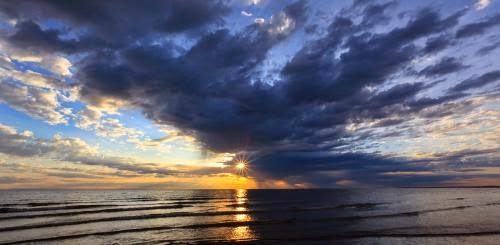First reported by Teodora Vasileva, Press Assistant, ITB Berlin, Messe-Berlin
Further edited by Gan Yung Chyan / KUCINTA SETIA
Distributed to Everyone
Further edited by Gan Yung Chyan / KUCINTA SETIA
Distributed to Everyone
Berlin- The Uvs Nuur Basin of Mongolia, designated a UNESCO World Heritage Site in 2003, reveals a remarkable ecological diversity – desert, marsh, dunes, semi-desert, steppe, taiga, tundra, and glaciers – in a relatively compact zone untouched by human activities. Its unique location at the geo climatic border of Siberia and Central Asia, with temperatures reaching + 470C in the summer and - 580C in the winter, offers a natural habitat of animals ranging from the endangered snow leopard and ibex to the white-tailed sea eagle. More than 362 bird species, including some rare migratory birds, can be watched in the area, too. The Uvs Nuur Basin area has barely any industrial development where the small population continues to practice traditional nomadic herding which plays an important role for the conservation of the ecosystem in the region and its pristine nature.
Lake Uvs, the main attraction, sits 743 meters above the sea level, the lowest point in Western Mongolia. Its surface area is 1.2 times larger than Luxembourg - making it Mongolia’s largest lake. Fed by 200 rivers and streams, it is quite shallow with an average depth of 12 meters, and has no outlet making it five times more saline than the ocean. The shallow water, which warms up quickly in the sun, is said to make skin smoother, more radiant and healthier, according to locals.
To provide comfort for visitors, the local government built the first ‘eco ger camp’ at the lake in 2014. The camp plans to open next year providing comfortable beds in a traditional Mongolian “ger” and serve authentic Mongolian food.
Uvs Governor D. Tsendsuren stressed the importance of tourism for the local government by saying, “We are now open to local and foreign investors interested in building resorts and camps at the historical and natural attraction sites. The unique eco system in the Uvs Nuur Basin is like a 'mini earth'. If one wants to experience Antarctica, just come here. We have great steppe, Gobi Desert, oasis, high mountains, lakes, rivers, everything. Here, we have salt craters which are highly beneficial for health. With so much to offer, we are working in cooperation with private sector to develop sustainable eco tourism”.
The area is also home to a variety of archeological wonders including 21 deer stones, 40 thousand petroglyphs, 20 stone steles with ancient scripts, and several ruins of ancient monasteries.
Mr Tsendsuren said the lake is also well known for its agricultural delights. “Our provincial brand is seabuckthorn,” he said. “We have more than 800,000 seabuckthorn trees, soon to reach a million. There are eight companies producing various products with it.”
One of the regional delights waiting to be enjoyed by travelers in the region is the natural salt plate dish.
Source : Official ITB Newsroom
MIAT Mongolian Airlines operates scheduled flights to Ulaanbaatar via Beijing from Singapore with effect from 24 September 2014. It also has scheduled flights to Ulaanbaatar from Hong Kong, Beijing, Seoul-Incheon, Tokyo-Narita, Moscow, Berlin, Osaka and Erlian.
Hunnu Air operates scheduled flights to Ulaanbaatar from Bangkok Suvarnabhumi, Hong Kong, Hailar, Manzhouli. Tokyo-Haneda and Paris. It also has an extensive domestic route network in Mongolia.
Hunnu Air operates scheduled flights to Ulaanbaatar from Bangkok Suvarnabhumi, Hong Kong, Hailar, Manzhouli. Tokyo-Haneda and Paris. It also has an extensive domestic route network in Mongolia.

No comments:
Post a Comment